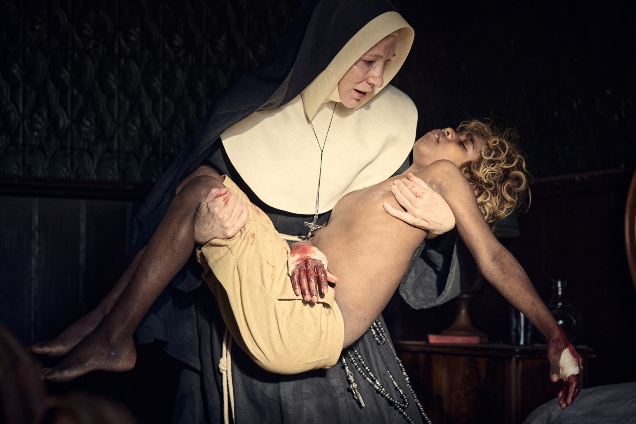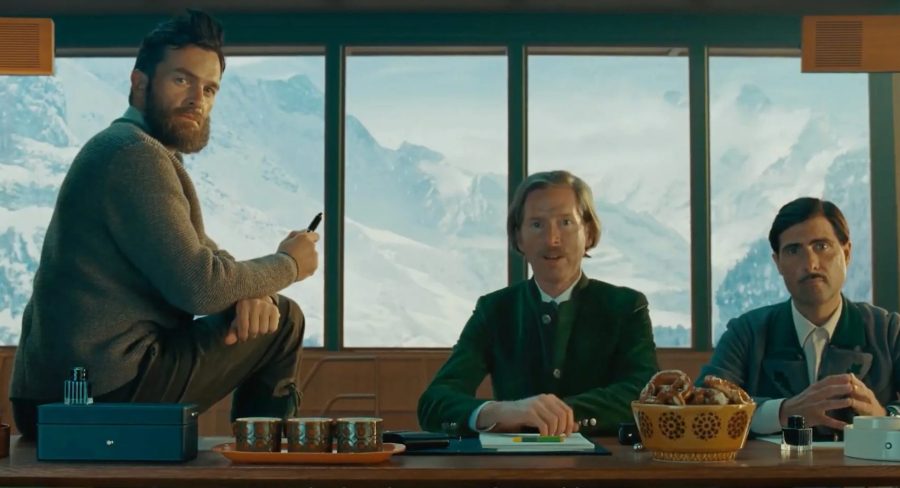The New Boy – Cannes 2023 (Film Review) – Starring Cate Blanchett
3 min read
Still Courtesy - Dirty Films
Continuing his saga of pre-established concepts and narratives surrounding Australia's Indigenous population, Warwick Thornton's The New Boy finds opportune footing in its visual allegories. Thornton relishes in the perspective of a young Indigenous boy; a nameless child who is brought to a monastery after a heated altercation with local law enforcement. By displaying the mythic and surreal as the instigator for the film's visual symbolism, the unreliable nature of the protagonist's headspace produces invigorating drama. A crisis of faith and heritage are at the thematic crux of The New Boy. Relishing in the unknown spirituality of its inciting conflicts, Thornton cleverly limits the titular protagonist's dialogue in near-mute fashion.
Silence is a form of violence in The New Boy. The limited English-spoken dialogue from the film's protagonist generates vicious contrast within the Christian abode. A baptism is directed with calamitous stake — a conversion which eradicates the remaining remnants of Indigenous ancestry from the susceptible protagonist. Thornton demonstrates these religious practices with great visual whiplash; the bright sun intruding the frame with staggering restlessness. There is bare beauty in these aforementioned sequences.
Whereas the supporting characters who work at the monastery are portrayed with empathy and humanity, Thornton cleverly hints at a greater threat. The true evil that lures within the institution's walls is a purely ideological force. These thematic motifs are reinforced by the renaissance-inspired composition. A clear influence from Rembrandt instantaneously evokes a sensation of clerical dread. Various scenes recall the gothic texture of Christian art; a vivid chiaroscuro which compliments the film's form. There are no real heroes or villains in The New Boy. Instead, the fall of the protagonist is represented through a spiritual eradication. Thornton's amiable critique of religious institutions is bold; never once blatantly relaying forced exposition to vicariously tell his tale of assimilation. On the flip-side, the vagueness of The New Boy‘s conclusion is compelling, albeit obvious. A more subtle and ambiguous ending would have better serviced the complex themes.
As the supporting characters communicate their own views and interpretations on the near mythic events showcased within the film's condensed runtime, Thornton often forgets to emphasise his period-setting. The world war backdrop is woefully under-utilised. The New Boy only occasionally contrasts the horrors of a fascist regime with the nonchalant hypocrisy of the depicted institutions. As a result, the film lacks the urgency of its era — obfuscating the social-political turmoil, whilst limiting the scope and severity of its tale of spiritual acclimatisation.
Warwick Thornton's The New Boy is a compelling examination on the ripple effects of assimilation — a film which unites Australia's ugly history of Indigenous genocide through a startlingly simple allegory. The duplicity and perspectives from the supporting characters enhances the dimensionality of the film's provocations. The multi-faceted depiction is a cinematic gamble that avoids directly empathising nor encouraging the involved accomplices. Thornton's third addition to his slowly growing filmography is engrossing, albeit flawed. The New Boy is a towering testament to a talent dedicated to his growing oeuvre of searing Indigenous stories.





